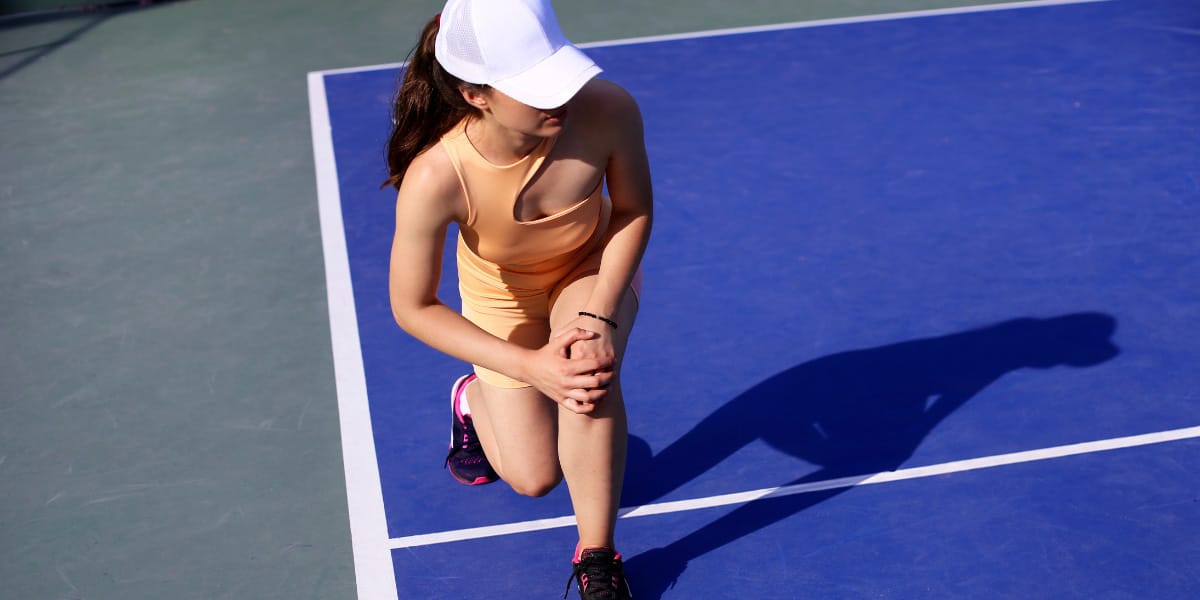
The most common injuries in pickleball are sprains or strains1. Fractures follow these, and then contusions or abrasions. The majority of these injuries, though, skew towards players over 50.
This is according to a study of 300 emergency room visits during 2001-2017 and published in the Journal of Emergency Medicine. Since the data was collected, the sport's popularity has grown significantly and the average of players significantly dropped.
90 Percent of Pickleball Injuries Affect Players Over 50: How to Protect Yourself
Understanding your deductible is key to protecting your finances, especially with high medical costs, but supplemental insurance like Emerge can help cover the gap when accidents happen.
Because of the nature of the game, common pickleball injuries often result from repetitive stress or sudden, intense movements. Some of the most frequently reported injuries include sprains, strains, and tendon issues, which typically affect the elbows, shoulders, knees, ankles, and lower back. These injuries are often linked to overuse, improper form, or a lack of adequate conditioning.
A Common Pickleball Injury: Pickleball Elbow
One of the most frequently seen injuries among pickleball players is commonly referred to as “pickleball elbow.” Technically known as lateral epicondylitis or tennis elbow, this injury involves inflammation of the tendons on the outside of the elbow. It’s a repetitive strain injury, often brought on by the same wrist and forearm motions used when swinging a pickleball paddle.
Causes of Pickleball Elbow: Pickleball elbow occurs due to overuse of the wrist and forearm muscles, particularly during backhand swings. When players repeatedly use improper form or swing with too much force, it puts excessive strain on the tendons around the elbow. Playing for extended periods without taking breaks or switching up techniques can also increase the risk of developing this injury.
Symptoms of Pickleball Elbow: Symptoms usually include pain and tenderness on the outside of the elbow, which may extend down into the forearm. Many players also notice a weakened grip and pain when trying to grip their paddle or other objects. If left untreated, pickleball elbow can worsen over time, making even simple daily activities uncomfortable.
Who Is Most at Risk? Beginner players who are still mastering proper techniques are particularly susceptible, as are older players who may have weaker tendons and muscles. Additionally, players who practice frequently or have a history of elbow injuries should be especially mindful of symptoms to avoid aggravating their elbows.
Other Common Pickleball Injuries to Be Aware Of
While pickleball elbow is the most common, several other injuries can also impact players. Here are some of the other common issues to watch out for on the court:
Shoulder Strain and Rotator Cuff Injuries:
The repetitive swinging and overhead shots in pickleball can put significant strain on the shoulder muscles, especially the rotator cuff. This group of muscles and tendons helps stabilize the shoulder joint, but it can be susceptible to strain or even tears from overuse. Symptoms typically include pain in the shoulder, difficulty reaching overhead, and discomfort when lying on the affected side.
Ankle Sprains:
Pickleball involves a lot of quick lateral movements and direction changes, which can sometimes lead to ankle sprains. Stepping on an uneven surface or moving awkwardly can cause the ankle to roll, overstretching or even tearing the ligaments. Ankle sprains are painful and can lead to swelling, stiffness, and difficulty putting weight on the foot. Proper footwear and warming up thoroughly can help reduce this risk.

Knee Strains and Meniscus Tears:
The quick pivots and sudden stops in pickleball can put strain on the knees, especially if the player has weaker joint stability or a history of knee injuries. Over time, repetitive stress on the knee joint can lead to ligament strains or even meniscus tears. Symptoms may include pain, swelling, and stiffness in the knee, often worsening with activity. Strengthening the muscles around the knee and using supportive footwear are crucial for preventing knee issues.
Lower Back Pain:
Lower back pain is a common complaint, especially among players who bend and twist frequently during games. This strain on the lower back muscles and spine can result from poor posture or insufficient core strength. Players may experience dull, achy pain in the lower back, which can intensify with prolonged play. Core exercises and stretching can help alleviate and prevent back pain.
Injury Prevention Tips for Pickleball Players
Preventing injuries in pickleball starts with a proper warm-up and good technique. Light jogging, dynamic stretching, and arm circles help prepare the body for quick movements, while correct swing mechanics reduce strain on the elbows and forearms. Beginners should consider lessons to learn effective techniques and prevent injuries like “pickleball elbow.”
Strengthening and stretching are also essential. Exercises targeting the forearms, shoulders, core, and legs enhance stability and support proper body mechanics. Using the right equipment, such as a comfortable paddle and supportive shoes, can further reduce strain.
Regular breaks, scheduled rest days, and listening to your body are vital for avoiding overuse and enjoying the game for longer.
5-Minute Pickleball Warm Ups for Competition Day
Let’s start with some visualization. You are at a tournament, you have been sitting for hour and half, it’s so cold you can’t feel your hands, and you just ate a decent meal for the first time all day – Now you get called to your court. What
Injury Insurance Offers Peace of Mind
Getting injury insurance from our partner Emerge offers peace of mind off and on the court. It is specifically designed for recreational athletes, including pickleball players.
Don't wait for an accident to realize the gap in your coverage. Protect yourself with accidental injury insurance from Emerge.
- Affordable – as low as $1 per day or less
- Cash Benefits - paid directly to you
- Fast & Easy Enrollment – Less than 10 minutes
1 Pickleball-Related Injuries Treated in Emergency Departments